10 Lessons From Chicago’s New Landscapes
Major landscape architecture projects have had huge impact. What can we learn?
The opening of Millennium Park in 2004 in downtown Chicago is widely credited with launching a renaissance of public spaces—not just in the Windy City but nationally and even globally. The 25-acre park, built above a massive parking structure on a former rail yard, offers diverse and welcoming places for people to enjoy year-round. This ground-breaking “town square” has enhanced the city’s tourism, land values and overall cachet. It has also spurred numerous new and renovated parks, including adjacent, family-oriented Maggie Daley Park and the re-imagining of the Navy Pier.
These cutting-edge landscapes are even outpacing what’s happening with the city’s buildings, long the pride of Chicago. Blair Kamin, longtime architecture critic for the Chicago Tribune, wrote on September 9th: “As the 2017 Chicago Architecture Biennial prepares to open… the city occupies the unaccustomed position of boasting more innovation in the horizontal realm — evident in the vibrant landscapes of Millennium Park, The 606 trail and the downtown Riverwalk — than in the vertical one.”
Milwaukeeans have easy access to these exemplary spaces, whether for recreation or civic inspiration. I recently attended two programs that addressed landscape architecture in Chicago—past as well as present. In conjunction with The Cultural Landscape Foundation’s touring exhibition about modernist landscape architect Dan Kiley, the Chicago Architecture Foundation hosted a program that concluded with a stroll through the Art Institute of Chicago’s Kiley-designed South Garden. (In Milwaukee, Kiley’s Horse Chestnut Grove next to the Marcus Center for the Performing Arts has a similar mood of shaded respite. And UW-Milwaukee’s School of Architecture and Urban Planning will next host this Kiley exhibition, October 30 through January 12, 2018.
South Garden:
The Illinois Institute of Technology hosted a panel on the same day in Crown Hall, a modernist glass-and-steel icon designed by Ludwig Mies van der Rohe that feels like a huge treehouse. That program featured several leading Chicago landscape architects. Both events included presentations by Charles Birnbaum, founder and president of The Cultural Landscape Foundation in Washington, D.C. (an event co-host) and Ron Henderson, chair of IIT’s master’s program in Landscape Architecture + Urbanism. Henderson has been involved in landscape restorations of national and international significance. The Illinois Chapter of the American Society of Landscape Architects also co-sponsored both events.
Speakers made several references to Milwaukee. Brad McCauley, managing principal of Site Design Group, said he recently participated in a national meeting here of the American Society of Landscape Architects, which focused on Three Bridges Park. Terry Guen, master landscape architect for Millennium Park, gave a shout-out to the Urban Ecology Center for its leading-edge work.
Creative ideas are not bounded by locale—all the more so in today’s digital landscape. Here are 10 takeaways gleaned during these forums and from multiple visits to Chicago public spaces, which can help Milwaukee improve its own public spaces.
1. Successful Projects Attract The Public In Millennium Park, throngs mill around the gleaming kidney-shaped sculpture officially titled “Cloud Gate” but known as “The Bean,” as well as Jaime Plensa’s massive sculpture of ever-changing images that flank Crown Fountain. People rest on varied types of seating or on the park’s lawns. Some enjoy food and drink in an outdoor bar and café with plaza seating. There are places to enjoy quietude as well as activity, including free programming 365 days a year.
Cloud Gate:
Crown Fountain:
2 .Popular Public Places Breed Demand for More. Chicago parks have become so popular that developers now are willing to invest in creating more while ensuring they remain fully public. One such developer spoke from the audience at the IIT forum. Fees paid by developers have long played a role in funding parks in Chicago and Bob O’Neill, executive director of the Grant Park Conservancy, says there’s a strong culture of “parks philanthropy,” since both individuals and corporations recognize their value.
3. Influential Public-Space Champions Are a Key. Chicago’s former Mayor Richard M. Daley is unequivocally lauded for “changing the world for landscape architects” by making parks and other types of “urban greening” and beautification a top priority. Daley had an epiphany while visiting Paris and wanting his hometown to be as beautiful and welcoming. Landscape architects gained much stature and many commissions during Daley’s tenure from 1989 till 2011, which generated momentum that continues. Although current Mayor Rahm Emmanuel is less evangelistic than Daley, he advocates expanding the riverwalk and improving neighborhood parks.
4. Collaborations Can Be Fruitful. Chicago-based Terry Guen Design Associates worked with influential Dutch garden designer Piet Oudolf to implement his plan for Millennium’s innovative Lurie Garden, on which Washington, D.C.-based Gustafson Guthrie Nichol served as landscape architect. Guen spoke about how much she learned from that collaboration. Other high-profile landscape architects currently designing Chicago projects include James Corner Field Operations and Michael van Valkenburgh, both based on the East Coast and known for their ecological approaches to landscapes, like Guen.
Lurie Garden:
5. Sustainable Solutions Can Also Be Stunning. And fun. Chicago’s new public spaces must meet ecological standards, but that’s often not obvious. Van Valkenburgh’s Maggie Daley Park, connected to Millennium Park across a long, curvy bridge, includes an Enchanted Forest made from inverted trees recycled from the site. Other trunks became long benches.
6. Great Public Landscapes Should Embrace Nature. Guen spoke about cultivating “biophilia,” and sees “no difference between gardening and landscape architecture (noting that the renowned Beatrix Farrand considered had called herself a “landscape gardener”). Guen believes that landscape architects must know how plants grow and how ecology works.
7. Landscape Architects Deserve Equal Footing With Building Architects. Panelists said that often happens now in Chicago. However, there’s still work to be done so that landscape planning does not happen as an afterthought, or merely under the direction of architects. Conor O’Shea, who recently moved from Chicago to join the faculty of the University of Illinois in Champagne-Urbana, spoke about the “Grass Ceiling” that often still exists for landscape architects.
8. Sensitivity To The Site Is Essential. In 1893, the World’s Columbian exhibition served as a showcase of ideas, including for landscapes designed by Frederick Law Olmsted, considered the father of American landscape architecture. Later, Burnham & Bennett’s 1909 Plan for Chicago “set a new bar for what landscape can do for you,” said Guen. Nonetheless, landscapes can too easily be undone through neglect or even wrecking balls. Some in Chicago have taken pains to honor existing landscape designs while updating them. Birnbaum noted that today’s landscape architects would not think of proceeding without an ecological survey and should take equal pains to know the historic and cultural significance of spaces and neighborhoods. He touted the value of accessing and contributing to the Historic American Landscape Survey. TCLF also has an ever-growing searchable database of important landscapes throughout the U.S.
9. Public Spaces Must Be Truly Public. Birnbaum noted that design of public landscapes has long been based on “democratic values,” on creating spaces that are inclusively, equitably public. Chicago officials and designers are taking note that appealing parks can also lead to gentrifying displacement of the very people they are meant to serve. Numerous strategies are being discussed–and some implemented–to promote equity. (For example, funding neglected neighborhood parks and including affordable housing as part of planning for areas getting upgrades to their parks.)
10. Getting The Word Out About Great Landscapes Is Crucial. Users of public spaces essentially vote with their feet—and often with their cell-phone cameras—when they like being in a public space. Birnbaum saw it as a positive sign that many professionals in the audience share images through Instagram and other social media. He also encouraged publishing in peer-reviewed journals. Panelists also stressed the importance of building relationships between working professionals and academia. Henderson urged that people simply share as widely as possible “whatever you’re passionate about.”
For more information:


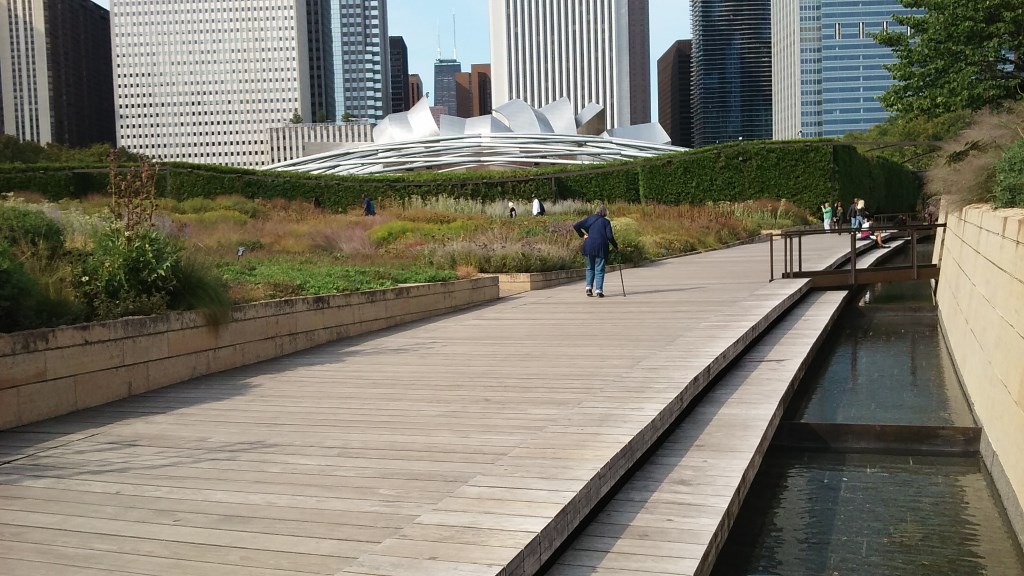
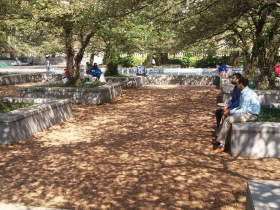
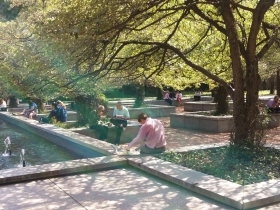
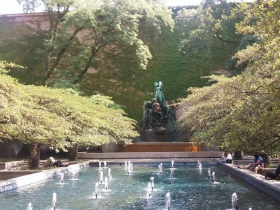
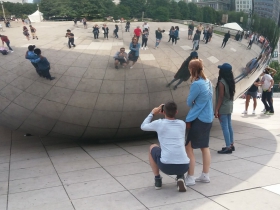
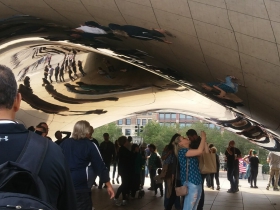
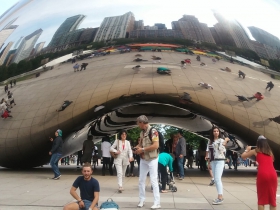
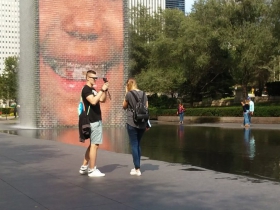
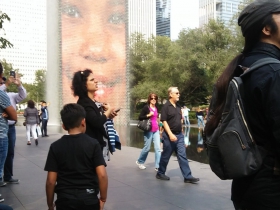
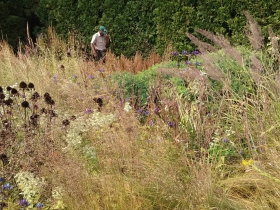
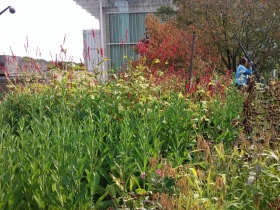
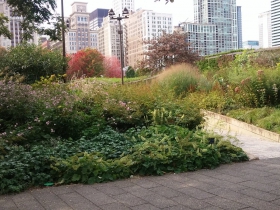
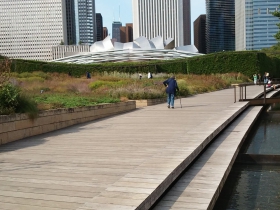
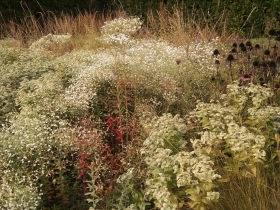
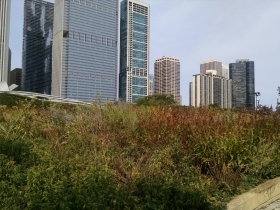




















MKE still has Chicago beat with beautiful parks and public spaces. Mpls is high of the list, but no city that I can think of beats MKE. Just go to Lakeshore Park a view the lakeshore from there. Stunning, absolutely stunning!
“Great Public Landscapes Should Embrace Nature.” – BRAVO!
Chicago parks are very well maintained and in beautiful condition. Wish I could say the same for Milwaukee’s.
This is an excellent piece. It should be made required reading in a variety of college/university courses, e.g., in the field of urban planning and development. Chicago does have fabulous spaces, and the creativity and stunning architecture are amazing. We are coming along quite nicely–the lake shore state park and the new smaller park connecting Couture to the lake front, and the plans to expand the river walk are good examples. Also, consider the really spectacular architectural additions to the skyline and those in process and to come. But we could really beef up the area at Veteran’s Park, especially around the Vietnam Veteran’s Memorial, which could become a more attractive place (like Millennium Park in Chicago) for Milwaukee folk to gather on beautiful summer days.
There’s another notable collaboration (#4) at Millennium, with a SE Wisconsin connection. Plants for the Lurie Garden were all grown by Northwind Perennial Farm in Burlington, just north of Lake Geneva.
http://northwindperennialfarm.com/
Co-owner Roy Diblik is a nationally renowned plantsman specializing in native plants. Also a garden designer, he’s been involved in recent projects at Boerner Botanical Garden and the Sharon Lynn Wilson Performing Arts Center in Brookfield (and surely others locally). The latter is a collaboration with sculptor Susan Falkman, who also did the sequence of eight large sculptures for the the courtyard of Boerner’s visitor center.
Also, as noted by commenters, 22-acre Lakeshore State Park is an exemplary new landscape gem here that has garnered many awards. Having helped launch this urban state park, the Friends of Lakeshore Park are now turning their attention to raising funds to build one of the world’s greenest buildings, which will generate more energy than it uses–and will surely attract eco-tourism.
http://www.friendslsp.org/
I fear that with the design of the Lakefront Gateway Plaza, we’ll miss out on creating a space that offers anything as magical as the Cloud Gate sculpture in Chicago. I see the plans calling for a feature that lights up different colors according to the weather, but will that really be that enticing? Don’t get me wrong, there are things to like about the proposed design, but nothing that people can interact with like the “bean”, as most call it. I’m not going to sit and stare at a light feature that will tell that it’s cold, rainy, snowy, etc. Not that interesting. What about that project says, wow, that is totally cool and unique and I really want to go down and check it out. Water spouts for kids to run through are nice, but they’re not unique. Every time we go to Chicago we try to stop at Millenium Park because it’s hopping and great people watching, especially around the Cloud gate. Will we be able to say the same about the Lakefront Gateway?